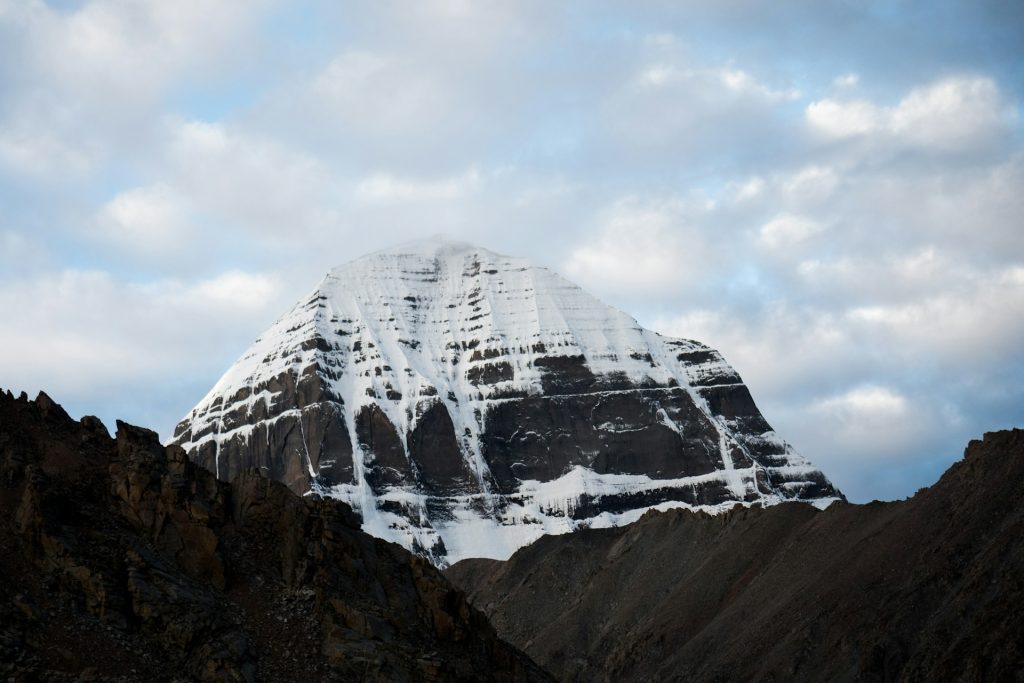The Kailash Mansarovar Yatra is one of the most sacred pilgrimages for followers of Hinduism, Buddhism, Jainism, and Bon, drawing thousands of spiritual seekers from across the globe.

This spiritual journey takes pilgrims to Mount Kailash (6,638 meters / 21,778 feet), revered as the earthly manifestation of Mount Meru and the abode of Lord Shiva. Along with the visit to the serene Lake Mansarovar, the most significant part of this pilgrimage is the Kailash Parikrama, a circumambulation around Mount Kailash.
This three-day trek during Kailash Mansarovar Yatra holds immense religious significance, symbolizing the devotee’s spiritual journey towards enlightenment and liberation from the cycle of birth and rebirth.
The Kailash Parikrama (also known as Kailash Kora) is a challenging yet deeply rewarding experience, covering a distance of approximately 52 kilometers (32 miles).
Pilgrims who complete the Kora believe that it purifies the soul and erases sins accumulated over many lifetimes. The trek reaches its highest point at the Dolma La Pass (5,636 meters / 18,500 feet), where pilgrims experience a deep spiritual transformation, surrounded by the towering peaks of the sacred mountain.
Day 1: Darchen to Dirapuk (Trek Distance: 20 km / 12.4 miles)
The Kailash Parikrama begins at Darchen, a small settlement located at an altitude of 4,675 meters (15,340 feet), which serves as the base camp for the pilgrimage. Pilgrims set out on foot, with their journey taking them along the western face of Mount Kailash.
The route on this day is relatively flat, providing stunning views of the mountain’s north face as you approach Dirapuk. As you walk, you will pass by the Yam Dwar, or the “Gateway of the God of Death,” a spiritual threshold where pilgrims offer prayers before continuing the trek.
Upon reaching Dirapuk at an altitude of 4,900 meters (16,076 feet), pilgrims are greeted with breathtaking views of Mount Kailash’s towering north face, which stands as a symbol of divinity and power.
Many devotees spend time meditating here, absorbing the spiritual energy that radiates from the mountain. Dirapuk is a key resting stop, offering basic accommodations for the night.
The first day of the parikrama is a gentle introduction to the trek, with awe-inspiring views of Mount Kailash’s north face. The spiritual significance of crossing the Yam Dwar and the chance to offer prayers here marks the beginning of the sacred journey.
Day 2: Dirapuk to Zuthulpuk via Dolma La Pass (Trek Distance: 22 km / 13.7 miles)
The second day of the Kailash Parikrama is both the most challenging and the most spiritually significant. Pilgrims set off early in the morning to climb the steep trail toward the Dolma La Pass, the highest point of the entire pilgrimage at 5,636 meters (18,500 feet).
The ascent is physically demanding, but pilgrims believe that the Dolma La Pass represents the transition from life to death, symbolizing the shedding of one’s sins and the beginning of spiritual rebirth. Many pause at the top of the pass to offer prayers and meditate in silence, connecting with the divine energy that surrounds them.
Just beyond the pass lies the Gauri Kund (Lake of Compassion), a sacred lake associated with Goddess Parvati. According to Hindu mythology, it is here that Parvati bathed and created her son, Lord Ganesha.
Pilgrims stop to offer prayers and reflect at this holy site before continuing their journey. The descent from Dolma La is steep and challenging, leading to the next stop at Zuthulpuk, located at an altitude of 4,790 meters (15,715 feet).
This stop is named after the Zuthulpuk Monastery, where pilgrims can explore the cave that is believed to have been used by the Tibetan Buddhist saint Milarepa for meditation.
The spiritual significance of crossing Dolma La Pass, the highest point of the trek, and the visit to the sacred Gauri Kund make this day the heart of the Kailash Parikrama. The physical challenges of the climb are balanced by the immense sense of spiritual accomplishment.
Day 3: Zuthulpuk to Darchen (Trek Distance: 10 km / 6.2 miles)
The third and final day of the Kailash Parikrama is a relatively easy descent back to Darchen, where the circumambulation of Mount Kailash is completed. Pilgrims follow the trail along the river valley, enjoying a more gradual walk after the rigors of the previous day.
Along the way, you will encounter prayer flags fluttering in the wind, left by previous pilgrims as a symbol of their prayers and wishes for peace and spiritual growth.
As the trek comes to an end, many pilgrims experience a profound sense of spiritual fulfillment, having completed one of the most challenging and rewarding journeys of their lives.
Upon reaching Darchen, pilgrims often visit the Darchen Monastery to offer prayers of gratitude for completing the sacred Kora. This final act of devotion marks the end of the Kailash Parikrama, but the spiritual transformation that pilgrims undergo remains with them long after the physical journey has ended.
The descent to Darchen offers a reflective journey back to the starting point, where pilgrims can take in the natural beauty of the landscape and contemplate the significance of their completed pilgrimage.
Conclusion: A Journey of Devotion and Transformation
The Kailash Parikrama is far more than a physical trek; it is a deeply spiritual journey that challenges the body, mind, and soul. For Hindus, Buddhists, Jains, and Bon followers, this sacred circumambulation represents a pilgrimage toward inner peace, spiritual purification, and divine enlightenment.